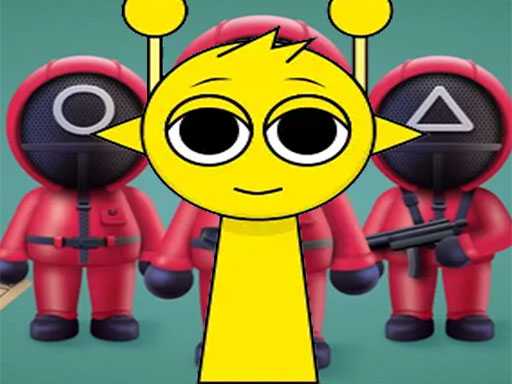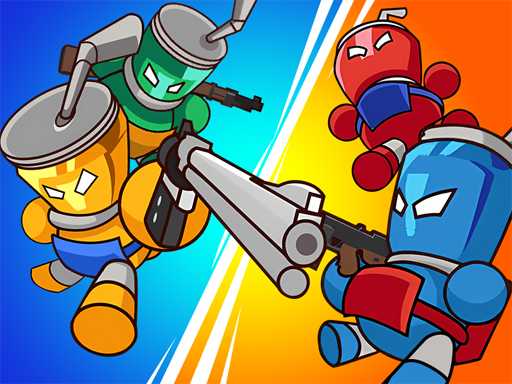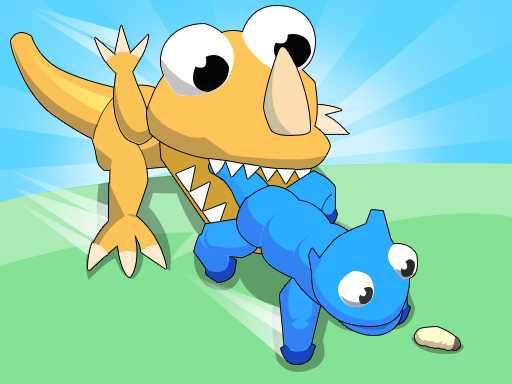
The Ultimate Guide to Puzzle Sorting Games: Mastering Fun, Focus, and Strategy
Why Puzzle Sorting Games Hook Us
Have you ever opened a game “just for five minutes” and suddenly found yourself an hour deep, still determined to finish that tricky level? That’s the magic of puzzle sorting games. With their colorful designs, seemingly simple mechanics, and surprisingly clever challenges, they grip both casual players and serious puzzle lovers alike.
This article will take you through the fascinating world of puzzle sorting games, with a special spotlight on the modern “bucket sort” style challenges. We’ll explore how these games stimulate the brain, why they’re so addictive, and how you can sharpen your skills while still having fun. Along the way, you’ll find real-world tips, relatable stories, and a few laughs (because who hasn’t yelled at a screen when a move went terribly wrong?).
Ready? Grab your virtual buckets—it’s sorting time!
The Heart of Puzzle Sorting Games
At first glance, puzzle sorting games look simple: you move items—whether balls, bottles, or buckets—until each group matches perfectly. But beneath the colorful layers lies something deeper. These games rely on three pillars: logic, pattern recognition, and patience.
- Logic keeps you thinking two steps ahead.
- Pattern recognition helps you spot similarities and differences quickly.
- Patience? Well, let’s just say hitting restart three times in a row teaches a valuable lesson in self-control.
Think of them as brain gyms disguised as entertainment. You’re not just playing—you’re quietly building focus, sharpening memory, and even improving decision-making.
A Journey Through the Levels
Every good puzzle game offers progression. That’s why the latest sorting challenges often come with 60 or more unique levels. The early stages feel like a warm welcome: easy colors, plenty of moves, and a guaranteed win. But soon the game whispers, “Let’s see what you’re really made of.”
By level 20, you’re calculating moves like a chess player. By level 40, you’re bargaining with yourself—“Just one more try before bed.” And at level 60? Victory tastes sweeter than your favorite dessert.
This gradual increase in difficulty mirrors life’s challenges. The more we adapt, the more confident we feel. Puzzle games remind us that persistence pays off—even when the buckets look hopelessly scrambled.
The Psychology of Why We Can’t Stop Playing
Why do puzzle sorting games keep us glued to the screen? The answer lies in psychology. Games like these tap into the “completion principle”—our brain loves finishing tasks. Seeing a bucket neatly sorted delivers a tiny shot of dopamine, the chemical of satisfaction.
Combine that with:
- Immediate feedback (right or wrong moves).
- Visible progress (one step closer to a solution).
- Small, achievable goals (sort this set, unlock the next).
And voilà—you’ve got a recipe for joyful addiction. It’s the same reason people can’t resist organizing books by color or arranging a desk just right. Our brains crave order, and these games deliver it in rainbow form.
Strategies to Master the Game
Now, let’s get practical. If you’re stuck on a level and your buckets look like a spilled rainbow, don’t panic. Here are tried-and-true strategies:
- Focus on one color at a time. Don’t scatter your moves—commit to finishing one set fully.
- Keep a “buffer bucket.” Always maintain one empty bucket for maneuvering.
- Plan ahead. Imagine two or three moves into the future before acting.
- Undo when needed. Many games let you rewind mistakes—use it wisely.
- Don’t rush. The fewer moves you make, the better your final score.
Pro tip: If you get frustrated, step away for five minutes. The solution often appears the moment you stop forcing it. (Funny how life works the same way.)
A Story from the Bucket Battlefield
Picture this: It’s midnight. You’re on level 37. Your eyes are heavy, but the colors are taunting you. Just one more move, you think. Suddenly, you realize you’ve trapped a blue ball behind two reds. No empty bucket in sight. Restart.
Sound familiar? We’ve all been there. The beauty of these games lies in these moments of frustration that flip into triumph. When you finally solve a level that once felt impossible, the relief is so real you might actually pump your fist in the air. (Yes, we’ve all done the victory dance in silence—admit it!)
Lessons Beyond the Screen
What if puzzle sorting games were more than just digital fun? In many ways, they mirror real-world problem solving. Think about it:
- Organizing tasks at work = sorting priorities like colors.
- Managing relationships = sometimes moving pieces around until harmony appears.
- Learning patience = resisting the urge to “force” things before they fit.
Games are metaphors for life. And puzzle sorting? It’s about finding order in chaos—something we all crave.
The Fun Factor: Humor and Surprises
Let’s be honest—sometimes puzzle games make us laugh at ourselves. Like when you’re absolutely sure you’ve cracked the level… only to realize you’ve created the ugliest rainbow mess ever. Or when your cat walks across your screen mid-move (true story).
Some players even create challenges like:
- Solving with their non-dominant hand.
- Completing a level blindfolded (with a friend narrating moves).
- Timing themselves for bragging rights.
It’s proof that even simple games can spark endless creativity and fun.
The Social Side of Puzzle Games
Did you know puzzle games can also bring people together? From sharing scores in family group chats to challenging friends, these games spark lighthearted competition. Couples even play side by side, each claiming their strategy is superior. (Spoiler: the person with more patience usually wins.)
And thanks to online communities, players share solutions, tips, and even memes about the struggles of level 52. The shared experience makes victories feel bigger and losses less painful.
Playing on Different Devices
One of the best parts about puzzle sorting games is accessibility. You can:
- Tap on your phone while commuting.
- Click with your mouse during a quick break.
- Swipe on a tablet before bed.
The controls are intuitive: tap, drag, drop. No steep learning curve—just pure play. Whether you’re five or fifty, the game welcomes you with open buckets.
The Role of Design and Aesthetics
Ever noticed how the colors in these games pop? That’s no accident. Developers use vibrant palettes to keep your brain engaged. Smooth animations, satisfying sounds, and clean layouts add to the immersive experience.
It’s almost like the game whispers, “Stay a little longer.” And let’s be real—when the colors finally fall into place, the visual payoff is as satisfying as watching a row of dominoes topple perfectly.
When to Take a Break
As fun as puzzle games are, moderation matters. Too much screen time can lead to fatigue, and let’s face it—falling asleep with buckets dancing in your head isn’t the best idea.
A few simple tips:
- Set a timer before long sessions.
- Stretch between levels.
- Switch to a physical puzzle (like a Rubik’s Cube) for a change of pace.
Balance ensures that games stay joyful instead of overwhelming.
Building a Routine with Puzzle Play
Want to make puzzle sorting part of your lifestyle? Try weaving it into small daily moments. Play a level with your morning coffee, or solve a tricky stage before lunch as a mental warm-up. You’ll find that this tiny habit sharpens focus and sparks creativity for the rest of the day.
It’s like giving your brain a mini jog—no running shoes required.
Looking Ahead: The Future of Sorting Games
As technology grows, so do puzzle games. Imagine:
- 3D sorting puzzles with immersive graphics.
- Multiplayer modes where friends solve challenges together.
- AR (augmented reality) puzzles where you sort objects in your living room.
The potential is endless, but the core will remain: the joy of creating order, one move at a time.
Final Thoughts: Are You Ready to Sort?
We’ve traveled through strategy, psychology, humor, and lessons from puzzle sorting games. At their core, these games aren’t just digital distractions—they’re vibrant reminders of how satisfying it feels to solve, to create order, and to persist.
So, are you ready to show off your sorting skills? Whether you’re diving into 60 levels of colorful chaos or just passing the time with a quick round, remember this: every move is a step closer to victory. And hey—if you mess up? Just hit restart and laugh. After all, life gives us buckets too; it’s all about how we sort them.
For Your Social
#PuzzleGames #SortingFun #BrainTraining #GameNight #CasualGaming #FocusAndFun #PlayAndLearn




